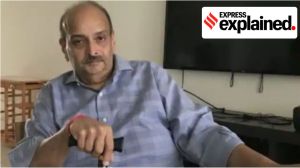The bodys protein cleaning machine
CLAUDIA DREIFUS spoke to Dr Avram Hershko,74,a biochemist and a winner of the 2004 Nobel Prize in Chemistry,about his discovery of how individual cells destroy and eliminate malfunctioning proteins
Excerpts from the interview:
How did the way that proteins are broken down within cellsthe topic for which you won the Nobel Prizebecome your lifes work?
I bumped into it by accident in 1969. At the time,I was a young Israeli biochemist with a fellowship to do postdoctoral studies with Dr Gordon Tomkins,at the University of California,San Francisco. Before my travelling to the United States,Id corresponded with Dr Tomkins about working on how proteins are formed in cells. But when I arrived,I could see he already had 25 postdocs studying that. To me the field looked overcrowded. Can I do something else? I asked. He suggested,Why dont you study the opposite?
So I ran to the library. There were hundreds of papers on protein formation and almost none on protein degradation. It was obvious that protein degradation was important. It was also obvious that nobody much cared about it. So here was perfect territory for a curious young scientist.
Why exactly is protein degradation important?
Because proteins are important. Proteins are the machines that carry out the directions of genes. They must be formed at a certain moment and destroyed when no longer needed or when they go bad. Think of a cell as something like an orchestra,with thousands of players. These are the proteins. They must all work together in harmony and play their parts at the right moment.
Maybe youve heard of Parkinsons disease and Alzheimers? There we have bad proteins accumulating in the brain and destroying brain cells. The reason we dont get Alzheimers when we are 10 is that when we are young,the bad proteins are disposed of quickly.
How does a cell know when to eliminate a protein?
Theres a tagging system. Every cell has within it a special protein that is everywhere: ubiquitin. Out of the thousands of proteins,this one tags damaged and bad proteins,binds to them and creates a molecular kiss of death until they are chopped up and degraded.
Did you discover ubiquitin?
Its existence was known. Its function was the mystery. Since the early 1970s,its been my focus. Much like watchmakers seeking to understand a clocks mechanisms,my then-graduate student Aaron Ciechanover (who with a US researcher,Irwin Rose,shared in the Nobel Prize) and I cracked open cells and figured out how the various parts worked.
Understanding the ubiquitin system took us a while. It would turn out that one of ubiquitins functions is to serve as a brake within the cell. When you have cancer,cell division can be something like a car running amok because its brake pedal isnt working. There are oncoproteins in the body that stimulate cell division. In a properly functioning cell,the ubiquitin tags the oncoproteins for degradation. When that doesnt happen,the cells keep dividing uncontrollablycancer.
It has long been thought that your research was likely to lead to a whole new class of drugs against cancer and neurodegenerative diseases. Has that happened yet?
Right now,we have only one drug based on our discovery,Velcade,which is very effective against a terrible disease,multiple myeloma. I would say 60 to 70 per cent of the people who take it get excellent remissions. Its not a cure. They get several more years of good quality life.
What have you been working on since your Nobel Prize?
Ive been continuing with the ubiquitin system and asking a very difficult question: How does it control how chromosomes divide during cell division? Each new cell gets 46 chromosomes,and the ubiquitin system is involved in that. If you dont have the right number of chromosomes,thats bad. Cancer cells usually dont have the right number. With Down syndrome,there are 47. We have to understand how the machinery of that works.



- 01
- 02
- 03
- 04
- 05




























